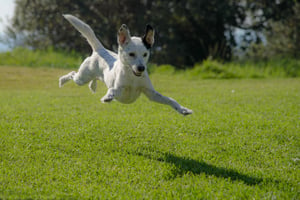Cockapoos are intelligent and loving dogs that can be easily trained. Toilet training is a key part...
Clumber Spaniel Training: Everything You Need to Know
Clumber Spaniels are intelligent and affectionate dogs that require a lot of training and patience to become well-mannered and obedient. This article will provide an overview of the basics of Clumber Spaniel training, including tips on how to handle the breed’s unique challenges. We’ll also look at some of the most common questions people have about Clumber Spaniel training, and provide helpful advice on how to get started.
Overview of Clumber Spaniel Training
Clumber Spaniels are a large breed of dog, and they require a lot of dedication and consistency when it comes to training. It’s important to establish a routine early on, so that your pup knows what to expect and can learn to follow commands. The most important thing to remember is that all training should be positive and reward-based. These dogs are sensitive and respond best to positive reinforcement and patience.
The goal of Clumber Spaniel training is to teach your pup basic obedience commands and good manners. This includes commands like sit, stay, come, leave it, and heel. It’s also important to teach your pup how to walk on a leash without pulling and how to socialize with other dogs and people. Training should also include basic grooming and health care, such as brushing and nail trimming.
It’s important to note that Clumber Spaniels can be stubborn and independent, so it’s important to stay consistent and patient with your training. It’s also important to use positive reinforcement, as these dogs respond best to rewards and praise.
Common Questions About Clumber Spaniel Training
People often have questions about Clumber Spaniel training, so let’s take a look at some of the most common ones. Keep in mind that every dog is different, so it’s important to tailor your training to your pup’s individual needs.
- How do I train my Clumber Spaniel to be obedient?
The best way to train your Clumber Spaniel to be obedient is to use positive reinforcement and reward-based training. Start with basic commands like sit, stay, come, and leave it, and use treats or verbal praise as rewards for good behavior. Consistency and patience are key, as these dogs can be stubborn and independent.
- How do I train my Clumber Spaniel to walk on a leash?
When training your Clumber Spaniel to walk on a leash, it’s important to start slow and use positive reinforcement. Start by letting your pup get used to wearing a collar and leash, and then gradually start taking short walks. If your pup pulls on the leash, stop and wait for them to relax before continuing. Reward your pup for good behavior with treats or verbal praise.
- How do I train my Clumber Spaniel not to bark?
Clumber Spaniels are known to be vocal dogs, so it’s important to train them not to bark excessively. Start by teaching your pup a “quiet” command, and reward them when they obey. You can also try to redirect their attention when they start barking, by offering them a toy or taking them for a walk. It’s also important to identify the triggers that make your pup bark, such as strangers or loud noises, and work on desensitizing them to these triggers.
Tips for Clumber Spaniel Training
Now that we’ve looked at some of the most common questions about Clumber Spaniel training, let’s take a look at some tips for successful training. Keep in mind that every pup is different, so it’s important to tailor your training to your pup’s individual needs.
- Be consistent: Clumber Spaniels are intelligent dogs, but they can be stubborn and independent. It’s important to be consistent with your training and stick to a routine. This will help your pup learn faster and make it easier for them to follow commands.
- Use positive reinforcement: Positive reinforcement is the best way to train your Clumber Spaniel. Use treats or verbal praise as rewards for good behavior, and avoid punishing your pup for making mistakes. This will help your pup learn faster and make training more enjoyable.
- Break up training sessions: Clumber Spaniels can get bored easily, so it’s important to break up training sessions into short, frequent sessions. This will help keep your pup engaged and make training more enjoyable.
- Be patient: Training a Clumber Spaniel takes time and patience. Don’t expect your pup to learn everything overnight, and be prepared to go over commands multiple times. It’s important to stay patient and positive, and reward your pup for their progress.
Conclusion
Clumber Spaniels are intelligent and affectionate dogs that require a lot of training and patience to become well-mannered and obedient. This article provided an overview of the basics of Clumber Spaniel training, including tips on how to handle the breed’s unique challenges. We also looked at some of the most common questions people have about Clumber Spaniel training, and provided helpful advice on how to get started. With patience, consistency, and positive reinforcement, you can successfully train your Clumber Spaniel to be obedient and well-mannered.



